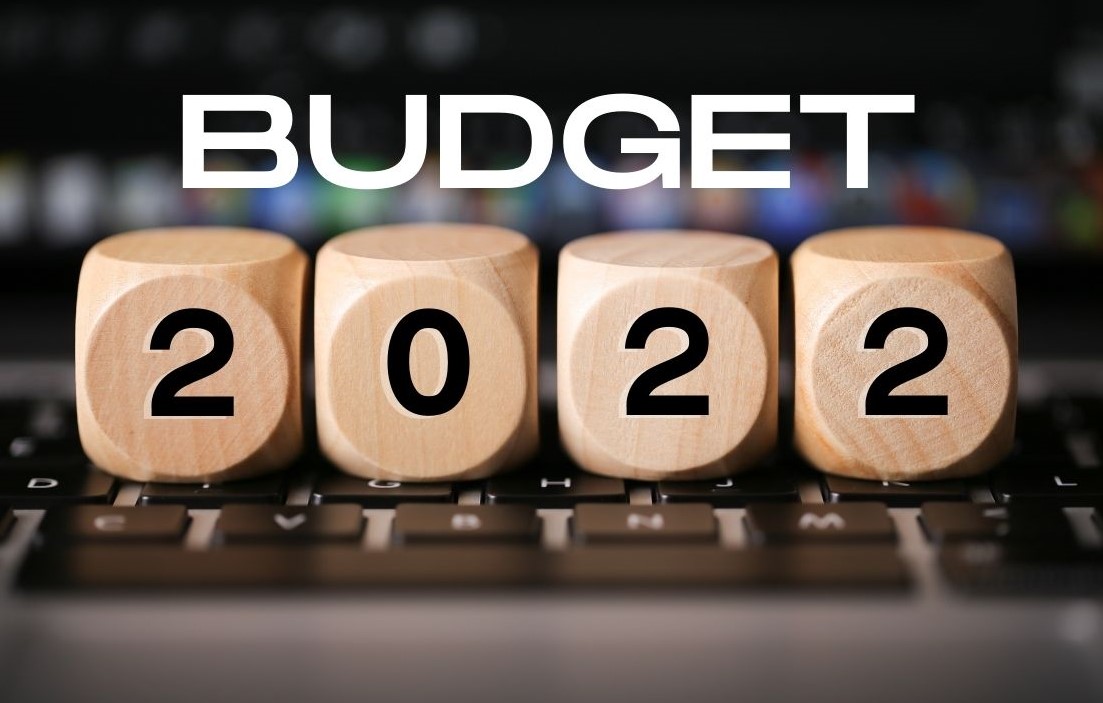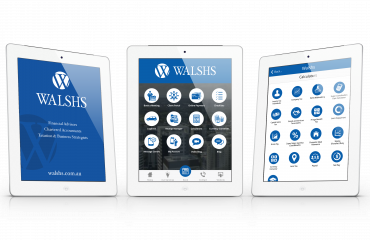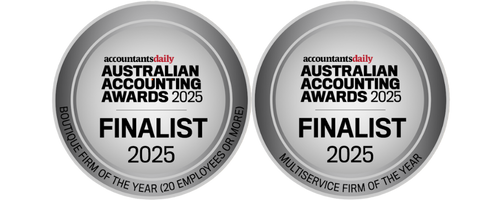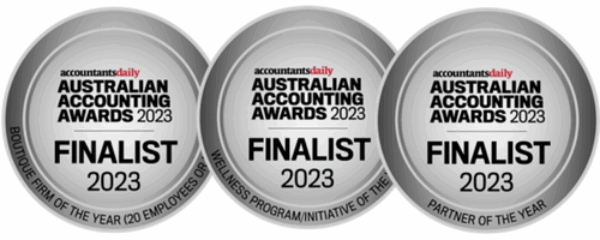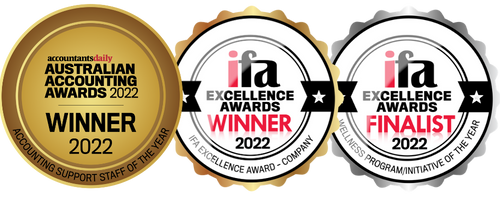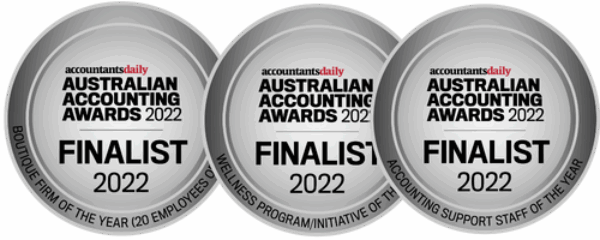The 2022-23 budget was handed down this week by Federal Treasurer Josh Frydenberg which encompassed the economic stability Australia is experiencing as it rebounds from the COVID-19 pandemic. Significant tax and productivity reforms were low on the agenda with focus mainly on key spending measures and continuing Australia’s post-pandemic, natural disaster and conflicted international environment recovery. Economic growth forecasts have been revised upwards, driven by stronger-than-expected momentum in the labour market and consumer spending. Wage growth is expected to slow from 2022-23 – 2025-26 increasing only .25% to 3.5%. On the back of this, the unemployment rate has also fallen to 4%, and is expected to reach 3.75% in the September 2022 quarter. Inflation is forecast to decrease from 4.25% in 2021-22 to 2.50% in 2025-26.
Below are the key outcomes from the budget 2022 update and a summary of key items of note as we near the end of the current financial year.
Low Income Offset – LMITO Increased
The low and middle income tax offset (LMITO) will be increased by $420 for the 2021-22 income year so that eligible individuals will receive a maximum LMITO benefit up to $1,500 for 2021-22 (up from the current maximum of $1,080). This one-off $420 cost of living tax offset will only apply to the 2021-22 income year. Importantly, the Government did not announce an extension of the LMITO to 2022-23.
Personal Income Tax Rates
No announcement was made to the change of personal income tax rates.
Temporary Reduction in Fuel Excise
The Government will reduce the excise and excise-equivalent customs duty rate that applies to petrol and diesel for 6 months by 50%. The excise and excise-equivalent customs duty rates for all other fuel and petroleum-based products, except aviation fuels, will also be reduced by 50% for 6 months. The Treasurer said this measure will see excise on petrol and diesel cut from 44.2 cents per litre to 22.1 cents.
$250 Cost of Living Payment
The Government will make a $250 one-off cost of living payment in April 2022 to 6 million eligible pensioners, welfare recipients, veterans and eligible concession card holders. The $250 payment will be tax-exempt and not count as income support for the purposes of any Government income support. A person can only receive one economic support payment, even if they are eligible under 2 or more of the categories.
Paid Parental Leave Changes
The Government has proposed to streamline the Paid Parental Leave (PPL) scheme into one process. Under the proposal the current 18 weeks available for the main carer and 2 weeks available for the second carer will be combined into a single 20-week scheme which can be split between those parents at their discretion. Single parents will also have access to the same 20-week scheme. The income test will also be broadened to have an additional household income eligibility test.
Company Tax Rates
No announcement was made to the change of company tax rates. Eligible companies will be taxed at a rate of 25% in 2022-23 and into the future.
Bonus Deductions on Digital Technologies
An eligible business with an aggregated turnover less than $50 million will be able to deduct an additional 20% of the cost incurred on business expenses and depreciating assets that support its digital adoption, such as portable payment devices, cyber security systems or subscriptions to cloud-based services. An annual cap will apply in each qualifying income year so that expenditure up to $100,000 will be eligible for the boost. The boost will apply to eligible expenditure incurred from 7:30pm (AEDT) on 29 March 2022 until 30 June 2023. The boost for eligible expenditure incurred by 30 June 2022 will be claimed in tax returns for the following income year i.e. 2023. The boost for eligible expenditure incurred between 1 July 2022 and 30 June 2023 will be included in the income year in which the expenditure is incurred. For expenses incurred from 1 July 2023 to 30 June 2024, the benefit will be claimed as additional depreciation over the effective life of the asset as a result of the forecast end of temporary full expensing.
Bonus Deductions on External Training
An eligible business will be able to deduct an additional 20% of expenditure incurred on external training courses provided to its employees. The training course must be provided to employees in Australia or online, and delivered by entities registered in Australia. Some exclusions will apply, such as for in-house or on-the-job training. The boost will apply to eligible expenditure incurred from 7:30pm (AEDT) on 29 March 2022 until 30 June 2024. The boost for eligible expenditure incurred by 30 June 2022 will be claimed in tax returns for the following income year i.e. 2023. The boost for eligible expenditure incurred between 1 July 2022 and 30 June 2024, will be included in the income year in which the expenditure is incurred.
COVID-19 Test Expenses to be Deductible
The Budget papers confirm that the costs of taking a COVID-19 test to attend a place of work are tax deductible for individuals from 1 July 2021. In making these costs tax deductible, the Government will also ensure FBT will not be incurred by businesses where COVID-19 tests are provided to employees for this purpose.
Primary Producers — Concessional tax treatment of carbon credit and biodiversity certificate income
The Government will allow the proceeds from the sale of Australian Carbon Credit Units (ACCUs) and biodiversity certificates generated from on-farm activities to be treated as primary production income for the purposes of the Farm Management Deposits (FMD) scheme and the tax averaging provisions from 1 July 2022. The Government will also change the taxing point of ACCUs for eligible primary producers to the year when they are sold, and extend similar treatment to biodiversity certificates issued under the Agriculture Biodiversity Stewardship Market scheme, from 1 July 2022. Eligible primary producers are those who are currently eligible for the FMD scheme and tax averaging.
Apprentice Wage Subsidy Support Extension
The Budget confirms the Government’s earlier announcement to extend the Boosting Apprenticeship Commencement (BAC) and Completing Apprenticeship Commencements (CAC) wage subsidies by 3 months to 30 June 2022. The Budget also includes funding over 5 years to introduce a new Australian Apprenticeships Incentive System from 1 July 2022 as further support to employers and apprentices in priority occupations.
Employee Share Scheme
The Budget confirms the Government’s intention to change the investment thresholds for unlisted companies in relation to employee share schemes. Where employers make larger offers in connection with employee share schemes in unlisted companies, participants can invest up to:
- $30,000 per participant per year, accruable for unexercised options for up to 5 years, plus 70% of dividends and cash bonuses; or
- any amount, if it would allow them to immediately take advantage of a planned sale or listing of the company to sell their purchased interests at a profit.
The Government will also remove regulatory requirements for offers to independent contractors, where they do not have to pay for interests. No date of effect is specified in the Budget papers.
TAX COMPLIANCE
Modernisation of the PAYGI System for Companies
The Government will allow companies to choose to have their PAYG instalments calculated based on current financial performance. The objective of this measure is to support business cashflows by aligning PAYG instalment liabilities and business profitability. The calculation of the PAYG instalments will be extracted from business accounting software, with some tax adjustments. After consultation with stakeholders the measure is expected to commence on 1 January 2024 with the application period of the enabling legislation commencing on or after that date.
Varying the GDP Uplift Factor or PAYG and GST Instalments
The Government proposes to set the GDP uplift factor for Pay as you go (PAYG) and GST instalments at 2% for the 2022–23 income year. This uplift factor is lower than the 10% that would have applied under the statutory formula. The objective of this measure is to provide cashflow support to small businesses, including sole traders, and other individuals with investment income, helping them to invest and grow. This measure will apply to small to medium enterprises eligible to use the relevant instalment methods (up to $10 million annual aggregated turnover for GST instalments and $50 million annual aggregated turnover for PAYG instalments) in respect of instalments that relate to the 2022–23 income year and fall due after the enabling legislation receives Royal Assent.
STP data to be shared with States and Territories
The Budget papers confirm the Government’s intention to develop the IT infrastructure required to allow the ATO to share single touch payroll (STP) data with State and Territory Revenue Offices on an ongoing basis. This will enable payroll tax returns to be pre-filled, reducing the compliance costs for businesses.
Extension of ATO’s Tax Avoidance Taskforce
Since 2016, the Government has provided the ATO with significant funds to address corporate and trust tax avoidance. The Government will extend the Tax Avoidance Taskforce by two years at a cost of $652.6 million. The measure is designed to increase tax receipts by $2.1 billion over the 2023–24 to 2025–26 income years
Minimum Pension and Drawdown Requirements
The Government proposes to extend the temporary reduction in the minimum pension drawdown rates required for account-based pensions and annuities, allocated pensions and annuities and market-linked pensions and annuities by 50% for a further 12 months to 30 June 2023.
Superannuation Guarantee Rates
No announcement were made to the timing of the next Super Guarantee (SG) rate increase. The SG rate is currently legislated to increase from 10% to 10.5% from 1 July 2022, and by 0.5% per year from 1 July 2023 until it reaches 12% from 1 July 2025. Employers need to be mindful that they cannot use an employee’s salary sacrificed contributions to reduce the employer’s extra 0.5% of super guarantee.
If you have further queries in relation to the above, please do not hesitate to contact our office for further discussion. For a full overview of the 2022-2023 Federal Budget documents click here to visit the government website.
